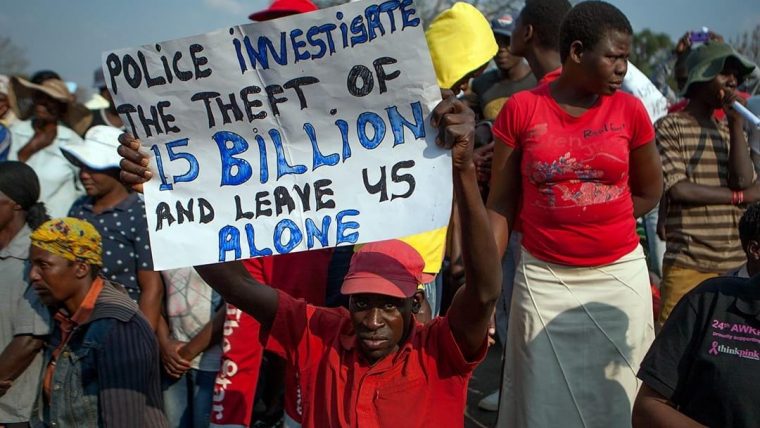In February last year President Mugabe announced that the eight mining companies operating in the Marange diamond fields in the east of the country would be nationalised, claiming that the companies had ‘robbed’ the country of its mineral wealth.
Since 2006 when the surface alluvial diamonds were ‘discovered’ in Marange, the massive wealth generated by these small stones has caused havoc. The experience of Marange over the past decade is an important lens on Zimbabwe’s tortured politics and economy in this period.
An excellent book has just been published by the wonderful Weaver Press in Harare – Facets of Power: Politics, Profits and People in the Making of Zimbabwe’s Blood Diamonds.
Edited by Richard Saunders and Tinashe Nyamunda it offers a series of chapters covering the Marange story from different angles.
The basic storyline of corruption, patronage, violence and theft is well known, with parallels in other mining sectors as discussed previously on this blog.
No-one knows how much of the diamond wealth was siphoned off and never declared. When Tendai Biti was Finance Minister in the ill-fated Government of National Unity (GNU) he was in constant battle with the Ministry of Mines, attempting to get transparent declarations.
No-one knew the scale of corruption and theft, but it was clearly massive. President Mugabe himself claimed that only $2bn of a potential $13bn of mining revenue was ever declared.
In the introductory chapter, Richard Saunders describes the ‘perfect storm’ that was the Marange story: “The confluence of extraordinary conditions – a once in a lifetime diamond strike; a state characterised by military partisan control, elite predation and withered professional capacity; and the presence in willing partners in a shadowing international trade – cast Marange’s diamond fields into the centre of politically inflected, violent and ultimately destructive struggle for control over extractive resources”.
But there are important nuances to this standard narrative repeated in the introductory chapters that are revealed by other chapters in the book. These make any simplistic, sweeping perspective on Zimbabwe’s ‘blood diamonds’ more complex.
As various contributions to the book show, although gaining the epithet from international campaign groups, Zimbabwe’s diamonds were not the classic ‘blood’ or ‘conflict’ diamonds of, say, Angola or Sierra Leone, directly feeding armed militias and insurgents.
Instead Zimbabwe’s diamonds fuelled different forms of patronage and corruption, sometimes for sure linked to violence, but with multiple beneficiaries who shifted over time.
Continued next page
(185 VIEWS)
